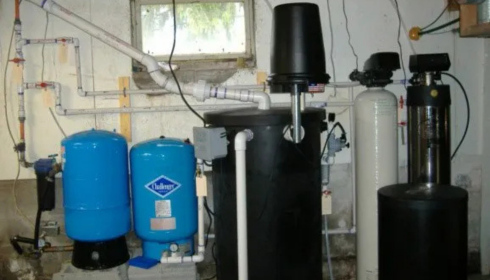If you’ve ever filled up a glass of water straight from your well and noticed a fizzing sound—almost like your tap’s been turned into a soda fountain—it can feel unsettling. Water isn’t supposed to bubble like that. Most folks shrug it off at first, but what you’re probably seeing is methane gas in well water. And while it might not be as immediately alarming as rusty stains from iron or the bitter tang of chlorine, methane introduces a different kind of concern: one you can’t always smell or taste, but you’ll definitely want to understand.
A Hidden Guest in Your Glass
Methane is a naturally occurring gas, usually produced by organic material breaking down deep underground. It’s the same gas that burns in your stove if you’re hooked up to natural gas lines. In wells, methane can sneak in through geological formations, coal beds, or leaks from nearby oil and gas activity. What makes it tricky is that it doesn’t leave behind a strong taste or odor like sulfur does. Instead, the first hint might be those little streams of bubbles rising through a clear glass of water—or a gurgle that wasn’t there before.
Now, most people jump straight to the big question: is methane in water dangerous? The answer isn’t black and white. It’s not typically toxic to drink in small amounts. The bigger risks come from what happens when it accumulates: explosive potential, changes in taste, and even oxygen displacement in enclosed spaces. So while you may not keel over from a single sip, ignoring it isn’t a great long-term strategy.
Living With the “Invisible”
There’s something about methane that feels unnerving—maybe because you can’t always sense it until it’s in high enough concentrations. Imagine filling your bathtub while methane collects in the air around it. All it would take is a spark from a lighter, or even static, to create a dangerous situation. That’s why well owners in areas prone to methane issues are encouraged to test regularly and install ventilation or treatment systems if needed.
This isn’t fear-mongering—it’s practicality. Much like checking the batteries in your smoke detector, keeping tabs on your water is a matter of safety. Families in rural areas often learn this the hard way: a sudden flare at the tap, a lighter held too close, or unexplained headaches in poorly ventilated basements.
Tackling the Problem Head-On
So what do you do if methane shows up in your well water test? Fortunately, there are solutions that don’t involve tearing up your land or giving up on your well entirely. The most common approach is aeration—basically giving the water a chance to “breathe” before it reaches your faucets. By releasing the gas into a controlled, ventilated space, the water that flows into your home is safer and much less likely to foam up like soda.
A water aeration system for methane works a lot like popping the cap on a fizzy drink and letting it go flat. It allows the gas to escape in a managed way, preventing dangerous buildup inside your pipes or home. Some systems are simple, while others are more advanced, using sealed tanks, diffusers, or spray mechanisms to maximize the gas release. The key is that it’s handled outside of your living space, where the risk of accidental ignition is minimal.
Balancing Worry With Reality
Here’s the thing: living with a private well is a balancing act. On one hand, you enjoy independence and control over your water supply. On the other, you carry the responsibility of maintenance, testing, and sometimes dealing with surprises like methane. It’s easy to spiral into anxiety, but most homeowners who address the problem head-on find peace of mind quickly.
Testing is the first step. Local health departments or certified labs can measure methane levels and recommend whether you need treatment. The second step is installation—choosing the right aeration or venting system for your household. The third is ongoing monitoring, because groundwater conditions can shift over time.
It’s a cycle, but one that becomes part of the rhythm of well ownership, like cleaning filters or topping up salt in a softener.
Looking Beyond the Headlines
Methane in water often makes headlines tied to fracking or oil drilling debates. While those cases are real, methane has been sneaking into wells for centuries—even long before modern industry. Blaming it on one factor alone oversimplifies a complex geological story. What matters for you, as a homeowner, isn’t the politics but the practice: recognizing when your water isn’t behaving normally and knowing what steps to take.
Some families go decades without an issue. Others discover it suddenly when new drilling starts nearby or when an old well deepens cracks underground. The takeaway is that methane is not something to panic about, but neither is it something to ignore.
A Personal Perspective
If you’ve ever lived on well water, you know it has a personality. Sometimes sweet and fresh, other times tinged with iron or minerals. When methane enters the mix, it’s less about taste and more about safety. I remember visiting a friend’s farmhouse where they joked about their “sparkling water tap.” We laughed at first, but once the lighter trick turned into a whoosh of flame, the mood shifted quickly. They installed an aeration system within weeks.
That story isn’t meant to scare you—it’s to remind you that small signs, like fizz in a glass, are worth paying attention to. Water is too important to gamble with.
Final Thoughts
Methane in your well isn’t the end of the world, but it is a signal. A signal to pause, test, and take action if needed. With the right treatment system, the problem becomes manageable, almost routine. You can still enjoy the independence of well water without the nagging fear of what’s bubbling beneath the surface.

